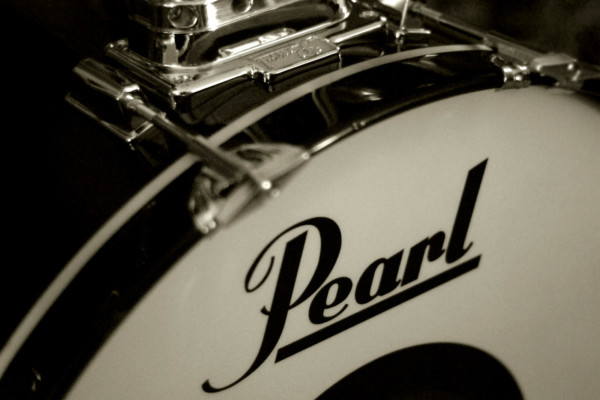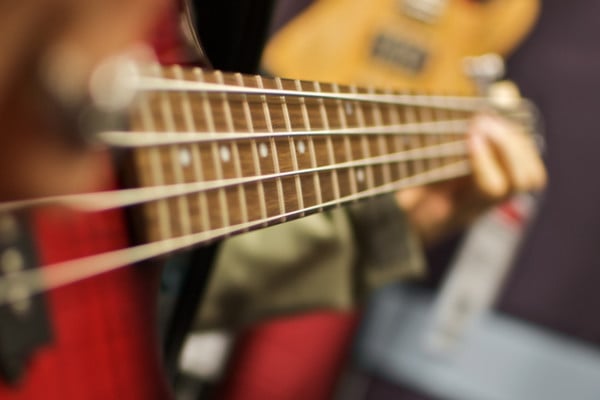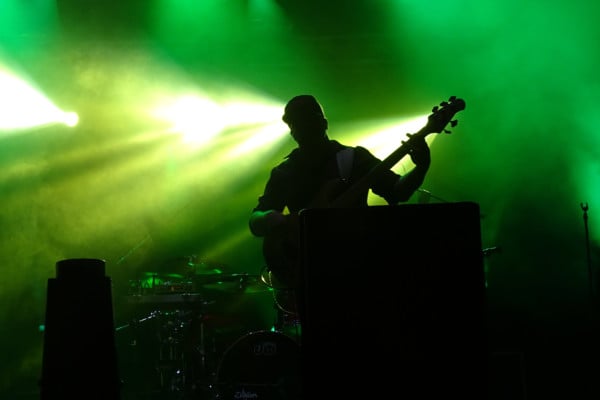Bass in Death Metal?

Q: What is your opinion of the role of bass in both Death Metal and Black Metal? I’m a big fan of both styles and have tried to work out by ear, exactly what the bass is doing, but within these styles, the bass is very seldom heard. In a situation like this, what’s the best way of playing along with a recording, or playing a particular bass part?
A: I’ll start by admitting that I’m a little outside of my wheel house here. Back when I was really into metal there was only hair metal and heavy metal, with a slight overlap into death metal. Metal these days has countless sub-genres and I’m not entirely sure what the differences are between them.
From what I can tell, the only real difference between death and black metal are in the drums (and the makeup). Blast beats abound on most of the black metal stuff I took a look at. The rest seemed pretty similar in approach, and the role of the bass stayed the same. Essentially, the bass is a sub-octave extension of the guitar in most of the examples I heard. Although, with both of these styles, the bass is indeed hard to discern. Partially because they are basically doubling the guitar rhythms while following the root motion and partially because everything is extra crunchy and distorted and, finally, much of this music is tuned down so it’s extra low and thick. Very hard to pick out the subtleties in a line.
The best way I’ve found to pick out hard to hear bass lines in a transcription setting is to put the track into a “slow-downer” app like Transcribe or Capo, and bump it up one octave. This can be hilarious with music we’re talking about, but you should be able to pick out the bass work a little bit easier.
Regardless, for playing along with recordings, you should try your hardest to find the exact line (note for note), try and get the right sound and just drill it over and over again. If you can’t tell what the bassist is actually doing, chances are the bassist is playing along with the guitarist(s). Find those roots and lock that rhythm to the grid, drink a Red Bull, keep a bucket of water near by to cool off those fingers in between riffs, and hit it!
Readers, what is your recommendation for transcribing those hard-to-hear bass lines? Please share in the comments.
Have a question for Damian Erskine? Send it to [email protected]. Check out Damian’s instructional books, Right Hand Drive and The Improviser’s Path.




Black metal bass simply follows root notes of the guitar but generally don’t trim pick because the loss of note quality. Death Metal allows the bass to shine in some instances and grants much more freedom. With that being said almost any guitar tab will give you what the bass is doing as well or at least point you in the right direction. Thanks to YouTube there are videos of songs being played in which you can follow the finger pattern. Unfortunately for most cases it comes down to good old fashion hard work and listening!
Erlend Caspersen, That’s all.
Have you heard of Nick Schendzielos?
Monstrous player. I’m a huge fan of Alex Webster as well.
Steve DiGiorgio. Especially the Death albums he played on. He brought the fretless style to Death metal. His tone, skill and feel on the instrument is amazing.
A good album for audible bass lines is Mayhem’s De Mysteriis Dom Sathanas, the production is not as lo-fi as stereotypically found in BM and listening to it on decent headphones I can hear the bass quite well.
Agreed. For BM bass I’d also say the last two Immortal albums. All shall fall and Sons of Northern Darkness.
Steve DiGiorgio is the best example of how to make good groovy and melodic approach to such a heavy sound and pretty much complicated harmonies. The best album that represents Steve’s playing is “Individual Thought Patterns” from the band called Death, but also Control Denied’s “Fragile Art Of Existence”. There is also a great player Sean Malone who plays with progressive death metal band Cynic.
Sean Malone’s work with Cynic is game changer. It was the reason I picked up a fretless.
My story with fretless was the same :) https://www.youtube.com/watch?v=qztlyZAsDOs
Just a quick note to say “thanks” to all the commenters in here for making positive and useful comments. Social media has been awash with such negativity that it’s refreshing to see some good content. Bass forward, gents!
The Album “Blood Oath” by Suffocation. Derek Boyer’s playing really stands out.
Black metal doesn’t really employ counterpoint, but in death (particularly prog death) it’s quite widely used. In black metal it’s all about “aroma” I’d say, and speed picking single notes coupled together with the occasional riff goes a long way to create that. Death metal is a lot more open to groove, and different playing techniques, because you dont necesarrily need to create the “wall of sound” that is black metal.
I’ve found they could save a lot of time/money if the rhythm guitar player would just buy a line splitter and an octave pedal.
I played with Massacre back in 1990 and did the Second coming album with them, though death metal is not my music of choice it was definitely extremely challenging with lots of changes. I was encouraged to not pump roots or copy guitar parts check it out it is on youtube. Looking back it was the most fun band I ever played with \m/
Hey, that’s awesome, Butch! Massacre are (were) great, and The Second Coming has a great and distinctive bass sound!
Outside of DM and BM Doom is an awesome genre for bass. Heavy blues riffs with a wall of sound and those old tube heads? Killer stuff. They really lay down some thick fuzzed groove and you feel it as much hear it, it’s not as easily lost in the mix.
Another aspect can be figuring out the rhythm. Sometimes the bass player might do a simpler driving bass line of eighths while the guitarists do sixteenths. For example the chorus of “Rabid” by Cannibal Corpse. Alex Webster just drives eighths while the guitars have an odd gallop pattern.
Some death metal bands will also use rapid tremolo from time to time where the bass and guitars all play as fast as possible and harmonically move together but it isn’t exact sixteenth notes.
Definitely check out Obscura, they use fretless in some of their parts, and sounds really cool. Their song “Incarnated” comes to mind. There is a really catchy fretless bassline in there when the guitars are playing straight 16ths. Youll know it when you hear it. Sometimes the simple can be the catchiest and most effective.
There are some bass solos in Death Metal, but it’s mostly just the bass playing the main riff with no accompaniment. A good example is the pre-verse of Hammer Smashed Face by Cannibal Corpse. Four measures of only the bass playing the verse riff.